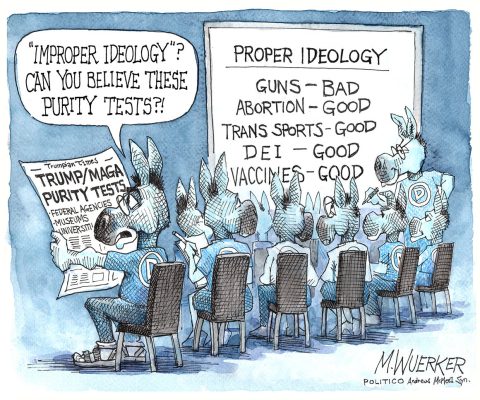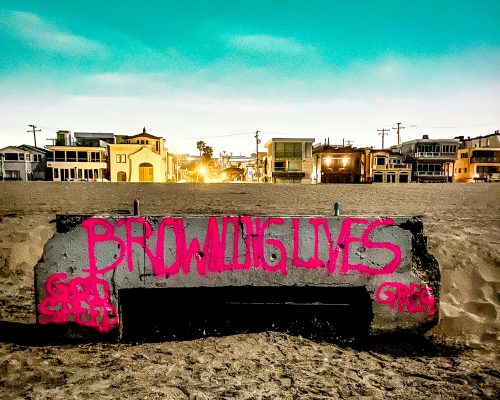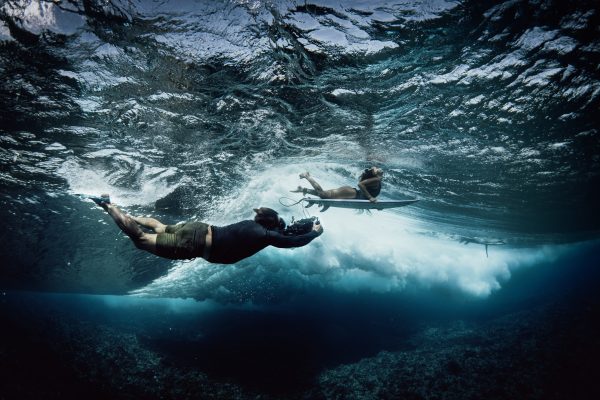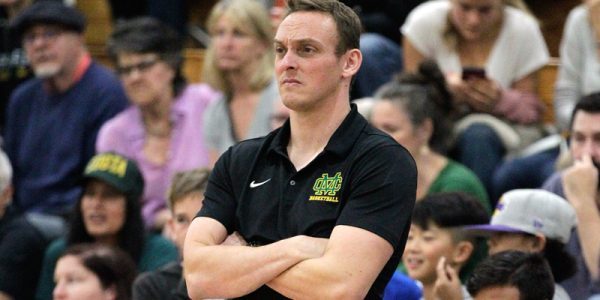
Richard Leider has a question for you. How you answer this question goes a long ways towards determining how long, and how well, you will live.
Why do you get up in the morning?
The nationally recognized author and executive coach, who is considered a pioneer in the field life/work design, is part of the Vitality City public health initiative currently underway in the Beach Cities. And while he is indeed asking local residents to help themselves live better and longer, he is no self-help guru and his work is not the stuff of New Age bookstores.
Leider teaches at Duke’s Corporate Education program and at the University of Minnesota’s Executive Development Center and is a guest lecturer at the Harvard Business School. Forbes magazine ranked him as one of the top five executive coaches in the nation, and he has worked with organizations ranging from MetLife to Habitat for Humanity and Caterpillar.
The reason Leider has become so renowned is that the vast majority of people don’t really have a good answer to this fundamental question and this has proven to be a bad thing both for those individuals and for the places they work. Perhaps more importantly, he has proven to be extremely effective in helping find that answer.
“It’s about engagement,” said Leider, who will conduct a workshop at the Redondo Beach Performing Arts Center on Jan. 31. “In addition to money, and health care – if you take those things off the table, people want to do something with their time that engages them, that uses their strengths, or gifts, on things that are important to do, ultimately. Not everybody gets that choice, but given that choice, people want that. So if you look at what constitutes engagement, it’s this formula: it’s using your gifts or strengths on things you feel purposeful or passionate or interested about in an environment that is healthy for you, that fits your values and is a good fit for you.”
“We are helping people to figure out that formula for themselves.”
Vitality City is a three year project that derives from the National Geographic “Blue Zones” study led by explorer Dan Buettner. He investigated the four areas of the world where people live the longest and quantifiably healthiest lives – Okinawa, Japan, the Nicoya Peninsula in Costa Rica, Sardina, Italy, and the Seventh Day Adventist community in Lorba Linda, California. These areas all have a relatively high number of people living vibrantly over the age of 100. The Blue Zones study, which became a best-selling book, sought to apply lessons to the rest of us.
What Buettner discovered is that people in these long-living areas live more physically active lives (a principal he dubbed “Move Naturally” to suggest incorporating exercise in daily life and rather than relegating it to a gym), eat less (Okinawans eat until they are 80 percent full) from largely plant-based diets, and are more socially connected. Most also have some type of faith and deeply value family and community.
People in Blue Zones also live with a pronounced sense of purpose that is often encoded in their culture.
“The first clue actually came from an Okinawa researcher named Dr. Craig Willcox who noticed that there is a word in the Okinawan vocabulary that imbued their entire adult life, and that was ‘ikigai’,” Buettner said. “You could ask every centenarian what their ikigai was and they could tell you instantly. They know their sense of purpose. So that kind of gives you the clue for what to start looking for in other cultures. You go to the Nicoya peninsula and they have a phrase for it, ‘plan de vida’ …There is vocabulary for it.”
Buettner and Leider are both from Minnesota but worked on parallel paths investigating some of the same issues until they came together in 2009 for the first ten-month Vitality City pilot project in a little town called Albert Lea. It was dubbed “the miracle in Minnesota” by AARP when participants added an average of 3.1 years to their life expectancies, lost an average of 2.6 pounds, and health care claims for city and school employees dropped by 32 percent.
The three year Vitality City project in the Beach Cities is bigger and more ambitious. Backed by Blue Zones and Healthways – an innovative firm that works with large corporations to improve employee health – and partnered locally with the Beach Cities Health District, Vitality City intends to become a national model for healthier living. An initial poll of Beach Cities residents conducted as part of the Gallup-Healthways Well-Being Index revealed that local residents were among the most worried, stressed, and angry people in the United States.
And most, Leider suspects, are not waking up in the morning with a clear sense of purpose. He notes that that average local resident spends 60 percent of his or her daily waking hours working and only 15 percent of each day doing something that has meaning to them.
Leider said that part of the solution is helping people realize that work and meaning are not mutually exclusive.
“The most successful businesses engage more people,” he said. “You know, the percentage worldwide – including the Healthways data – is that only one out of five people want to get up and go to work every day. It is not that work is a bad thing; it’s that most people don’t have a good fit. And part of that is not just to blame on big, dark, evil corporations and bureaucracies. Part of it is people haven’t done their homework, or haven’t had help doing their homework, to identify what it is they really bring to the party, what is their strength, and how they can add that [to their work lives].”
The changing nature of the global economy, Leider says, actually means that people need to more consciously think about adapting themselves to what they do for a living.
“We are in a new ‘Creator Economy’ these days,” Leider said. “The politicians keep saying ‘Jobs, jobs, jobs.’ Well, those jobs are gone forever. People have to keep reinventing themselves and re-offering their value over and over again or they are going to lose their jobs and be obsolete in spite of it all. So we have a lot of people in your community who need help who need help with this formula. Many of them are the working worried – they are working now, but they are worried they may lose their job. And they would be well-served to start doing their homework on how they are going to add value to where they are, or where they are going to be next.”
Leider’s work grows directly out of the field of logotherapy developed by the great Viktor Frankl, whose book “Man’s Search for Meaning” was written in nine days in 1945 after he was liberated from a Nazi concentration camp in Czechoslovakia. Frankl’s book was, in part, an examination of the struggle for human longevity in its most stark terms: prisoners who did not fall into self-absorption or pity but instead woke in the morning with purpose – whether to see their beloved again or to help those around them – were more likely to survive.
“We who lived in concentration camps can remember the men who walked through the huts comforting others, giving away their last piece of bread,” Frankl wrote. “They may have been few in number, but they offer sufficient proof that everything can be taken from a man but one thing: the last of the human freedom’s – to chose one’s attitude in any given set of circumstances, to chose one’s own way.”
Leider studied under Frankl for one week in 1968. Since then, his life’s work has grown out of his ongoing study of Frankl’s ideas and how they can be applied.
Vitality City has been on the ground in the Beach Cities for over a year, bringing to bear an “A-Team” of public health experts who include “Mindless Eating” author Brian Wansink and walkability/bike-ability specialist Dan Burden. Leider’s arrival this month marks a new, and in some ways deeper phase of the project.
“The National Institute on Aging, Duke, and Harvard have all done studies that focus on purpose, and each of them have been able to make a very clear connection between the ability to articulate life purpose and health outcomes,” Buettner said. “What Richard is good at – he knows the research, but what he is really good at is teaching it. There are people better than Richard when it coming to knowing why it works. But nobody is better at making it work.”
BCHD chief medical officer Lisa Santora said that several studies have shown a strong correlation between a person’s engagement with their community and family and their ability to survive such traumas as heart attacks and strokes – that is, those with a strong sense of self and purpose literally have more vitality, and hence a longer life.
“These are individuals that will live literally 50 percent longer,” Santora said.
Santora said that greater engagement – with work, community, and life – is in a sense the best preventive medicine possible. But communicating this notion is a difficult endeavor.
“We’ve been challenged with this strategy ourselves, because it can enter the world of self-help and New Agey-ness. But if you are dreading going to work in the morning, it’s time to take a look why. You are not going to support your well-being, because your day is going to go downhill from that moment, and that is when you are going to engage in maladaptive behaviors. You are going to be looking for outs to the pain you are feeling because you don’t know what you are doing that day. You are not being driven by your purpose….For the community to have the experience to work with a nationally renowned leader and to just start their journey – it’s just a great resource.”
Much of it comes down very simply to the word vitality itself.
“I think vitality is a critical word, and vitality comes from the inside out,” Leider said. “It’s not just an outside-in – it’s obviously important that you have clean air and clean food and exercise and all those other ingredients. But to see vitality in spades is when you see someone using their gifts in something they feel passionate about in an environment that fits them.”
Leider said there is second question that each person must ask themselves in addition to why they get out of bed in the morning.
“What keeps you up at night?” Leider asked. “This is really about your curiosity, you passions. The healthiest people throughout history are the curious ones – the ones who are curious about their own lives, and who are curious about each other. The ones who are growing in their lives in many ways. And so that is the second question: what keeps you up at night? It’s not about your worries, although that is part of it, but about your passions and curiosity and things you want in your life. Those are the two things we’ll be drilling down on in the workshops, in practical terms.”
Vitality City will be hosting a community workshop, Power of Purpose: Picture the Best Possible You at the Redondo Beach Performing Arts Center, from 6 to 8:30 p.m. on Jan. 31. The workshop costs $10 per person. Space is limited so reserving online is recommended.









